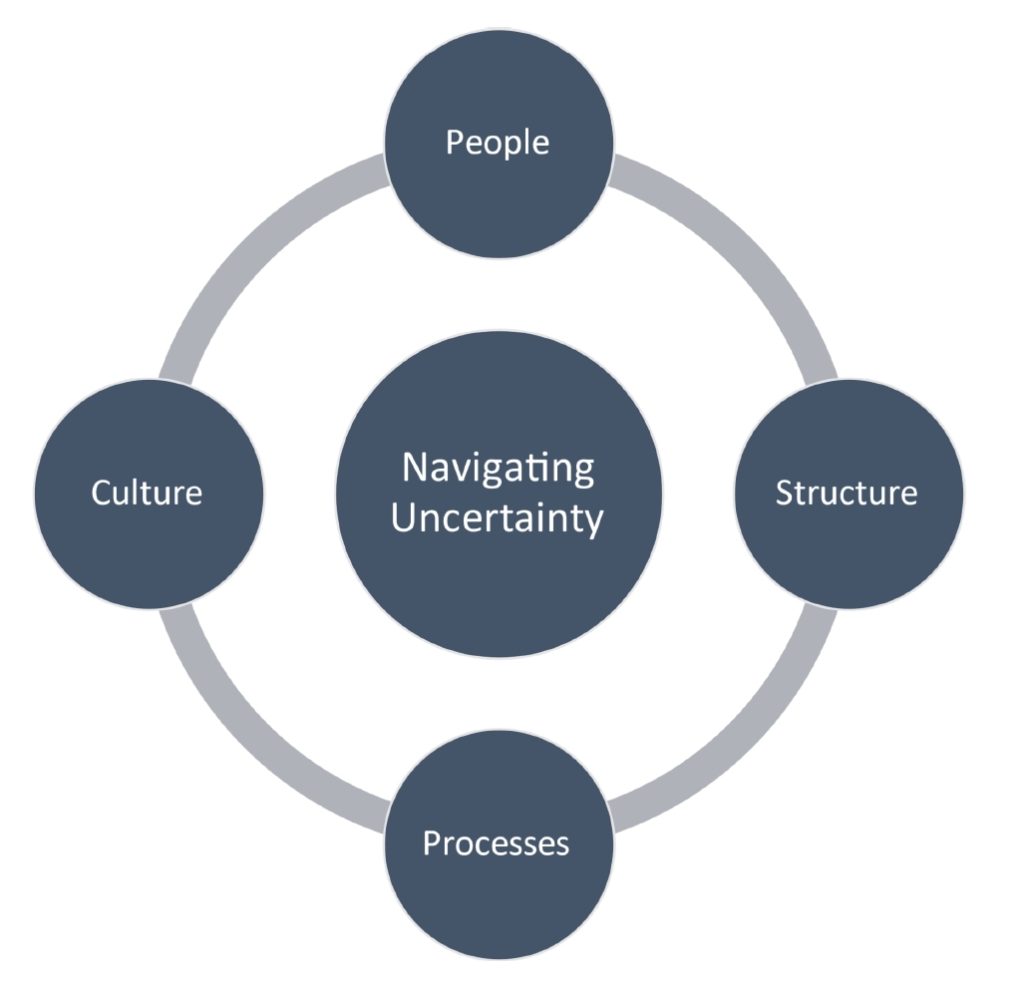Les conséquences à huit niveaux plus bas : L’institutionnalisation de la préparation dans les organisations d'intervention en cas de catastrophe
DOI :
https://doi.org/10.25071/73zdaz56Résumé
Votre organisation est-elle prête à survivre et à exploiter les opportunités qui se présentent dans chaque crise ? Les catastrophes gagnent en ampleur, en portée et en complexité, et les structures actuellement en place ne sont pas conçues pour faire face à la “catastrophe dans la catastrophe”, désormais courante. La pandémie de COVID-19 nous a montré que nos systèmes actuels doivent être révisés et mis à jour. Les événements du Cygne noir – des événements extrêmement rares et hautement perturbateurs qui peuvent déclencher des crises existentielles pour les organisations et les sociétés (Taleb, 2010) – autrefois considérés comme des événements générationnels sont désormais des éléments courants, interdépendants et aggravants de la vie quotidienne (Kayyem, 2022 ; Marcus et al., 2019 ; Roux-Dufort, 2007). Malgré cette réalité, la conception réactive de nombreuses organisations humanitaires et d’intervention en cas de catastrophe les rend vulnérables lors d’événements majeurs, risquant ainsi de ne pas pouvoir remplir leur mandat. Les mantras “cela ne peut pas arriver ici” et “cela ne se reproduira pas” sont naïfs et dangereux.
Références
Alperen, M. J. (2017). Resiliency and a Culture of Preparedness. In Foundations of Homeland Security: Law and Policy, Second Edition (pp. 397-406). Hoboken, NJ: John Wiley & Sons, Inc. https://onlinelibrary-wiley-com.login.ezproxy.library.ualberta.ca/doi/pdf/10.1002/9781119289142
Beckford, J. (2022, September 01). A Systemic Perspective on National Preparedness. National Preparedness Commission: https://nationalpreparednesscommission.uk/2022/09/a-systemic-perspective-on-national-preparedness/
Bundy, J., Pfarrer, M. D., Short, C. E., & Coombs, W. T. (2017, July). Crises and Crisis Management: Integration, Interpretation, and Research Development. Journal of Management, pp. 1661-1692. https://journals.sagepub.com/doi/full/10.1177/0149206316680030
Coombs, W. T. (2009). Conceptualizing crisis communications. In R. L. Heath, & H. D. O’Hair, Handbook of Risk and Crisis Communication. New York: Routledge.
Cooper, T. R. (2019). Creating a Culture of Preparedness. https://www.ncbi.nlm.nih.gov/pmc/articles/PMC8352363/pdf/djph-54-003.pdf
Coppola, D. P. (2015). Introduction to International Disaster Management, Third Edition. Boston: Butterworth-Heinemann.
Covello, V. T. (2003). Best practices in public health risk and crisis communication. Journal of Health Communication, 5-8. https://www.tandfonline.com/doi/abs/10.1080/713851971
Deloitte. (2022). The Adaptable Organization. https://www.deloitte.com/global/en/services/consulting/content/the-adaptable-organization.html
Gioia, D. A., Corley, K. G., & Hamilton, A. L. (2013). Seeking Qualitative Rigor in Inductive Research: Notes on the Gioia Methodology. Organizational Research Methods, 16(1), 15–31.
Heath, D. (2020). Upstream: The quest to solve problems before they happen. New York: Avid Reader Press.
Kapucu, N., & Özerdem, A. (2013). Managing Emergencies and Crises. Burlington, MA: Jones & Bartlett Learning.
Kayyem, J. (2022). The Devil Never Sleeps: Learning to live in an age of disasters. New York: PublicAffairs.
Marcus, L. J., McNulty, E. J., Henderson, J. M., & Dorn, B. C. (2019). You’re It: Crisis, change, and how to lead when it matters most. New York: PublicAffairs.
Mileti, D. S. (1999). Disasters by design: a reassessment of natural hazards in the United States. New York: Joseph Henry Press.
Paton, D., & Johnston, D. (2017). Disaster Resilience: An integrated approach, Second Edition. Springfield, IL: Charles C Thomas Publisher, Ltd.
Pearson, C. M., & Mitroff, I. I. (1993, February 1). From crisis prone to crisis prepared: a framework for crisis management. Academy of Management Executive, pp. 48-59. https://eds-s-ebscohost-com.login.ezproxy.library.ualberta.ca/eds/pdfviewer/pdfviewer?vid=1&sid=4a09644e-d42c-42c3-b29e-8f6c232a0689%40redis
Pine, J.C. (2014). Hazard Analysis: Reducing the impacts of disasters, Second Edition. Boca Raton: CRC Press.
Roux-Dufort, C. (2007, May 04). Is Crisis Management (Only) a Management of Exceptions? Journal of Contingencies and Crisis Management, pp. 105-114.
Taleb, N. N. (2010). The Black Swan: The Impact of the Highly Improbable, Second Edition. New York: Random House.
Taleb, N. N. (2012). Antifragile: Things That Gain from Disorder. New York: Random House.

